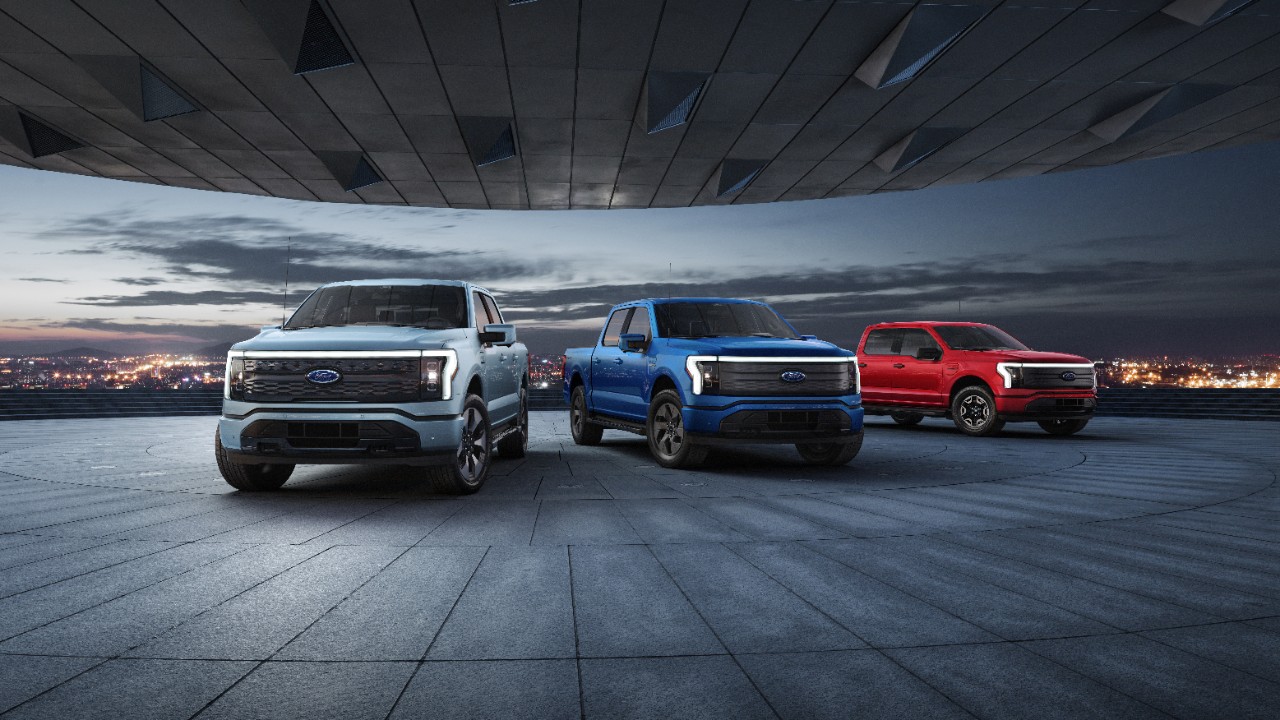
While there are differences among financial analysts and industry analysts about just how much trouble the auto industry is in this year, nearly everyone agrees automakers will sell fewer new cars in the United States in 2022 than their early forecasts for 2022 predicted.
Industry analysts at Cox Automotive have cut their forecast for 2022 U.S. new car sales from 16.0 million to 15.3 million, citing new coronavirus lockdowns in China and the Russian invasion of Ukraine as driving a new round of supply bottlenecks. Cox estimated a 2021 U.S. sales total of about 15.1 million units.
Analysts at Bank of America Securities expect U.S. new car sales for 2022 to total 13.9 million units, down from 14.6 million in 2021, a decline of 7%.
On Wednesday, we looked at BofA’s rating and price objective changes on several parts suppliers to the auto industry. Here we look at the nine automakers in the analysts’ coverage universe. Of that number, six manufacture only electric vehicles (EVs), and while BofA has given two of those six a Buy rating, only two received increased price objectives in the April 6 revision.
Among the three legacy automakers in BofA’s universe, all three are Buy-rated. One received a boost to the stock’s price objective, one remained unchanged and one price objective was lowered.
All six EV makers included in BofA’s universe were noted as having a high volatility risk rating, an indicator of potential price fluctuation. The three legacy automakers had medium volatility risk ratings.
Ford Motor Co. (NYSE: F) is a Buy, according to BofA. The analysts lifted their price objective on the stock from $30 to $32. At a recent price of around $14.80, the upside potential on Ford stock is about 116%.
The analysts based their Buy rating on a “micro earnings inflection … driven by the confluence of a favorable product cycle in the all-important US/NA market and benefits from its Global Redesign restructuring efforts, in addition to the ongoing macro recovery underway in the global automotive cycle.” The price target increase is the result of Ford’s “increased credibility and improving execution.”
Ford’s annual dividend of $0.10 represents a yield of 2.71% and the stock’s total return over the past year is 17%.
General Motors Co. (NYSE: GM) is also rated a Buy. The stock’s price objective was lowered from $100 to $95, implying an upside of 149% based on a recent trading price of $38.10.
As with Ford, the price objective tilts toward the high end of the stock’s trading range, but GM’s “recent change in momentum” accounts for the lower objective. The analysts base their rating on GM’s “ongoing execution and strength in its Core business [enabling] the company to step up its investments across EVs and AVs, further Future-proofing the business. Along these lines, GM continues to develop all the necessary components for the future of mobility services, which we believe may help unlock value over time.”
GM has suspended its dividend, and its total return over the past year is negative 37.5%.
Ferrari N.V. (NYSE: RACE) is also Buy-rated at BofA. The stock’s price objective of $300 was unchanged from its level set in January. At a recent price of $218.64, the upside potential to BofA’s price objective is 37.2%.
Calling Ferrari a “unique asset,” BofA’s analysts cite the company’s “resilient financial performance, significant intangible brand value, and a true luxury status” as their investment thesis. The price objective represents 25 times the estimated 2023 enterprise value to EBITDA (EV/EBITDA) multiple and “[reflects] ongoing volume, revenue, and earnings growth through 2023E+.”
Ferrari’s annual dividend payment of $1.55 represents a yield of 0.62%. The stock’s total return over the past year is 5.4%.
None of the six EV stocks pays an annual dividend and only one has posted a positive total return over the past 12 months.
Tesla Inc. (NASDAQ: TSLA) has a Neutral rating from BofA’s analysts. The stock’s price objective was raised from $1,100 to $1,300, implying an upside potential of 25.7% based on a recent price of $1,034.07. The price objective implies a four-times enterprise value to sales (EV/sales) multiple and a 25-times EV/EBITDA multiple “on pro-forma capital-induced 2025 estimates.”
Calling Tesla “a trailblazer in the electric vehicle market, BofA’s analysts say the company “could be successful as EV demand increases over time …[even though Tesla] may continue to face operational/financial hurdles, such as supply/demand challenges, potential future losses/cash burn, and the prospect of new competition and technology obsolescence, we believe the company can execute on further equity raises to fund accelerated growth and valuation higher.”
Tesla is the only EV maker to post a positive total return (almost 54%) for the past 12 months.
Fisker Inc. (NYSE: FSR) also has a Neutral rating from BofA’s analysts. The $23 price objective on the stock was cut to $18, implying a potential gain of 42.2% based on a recent price of $12.66.
Based on 2025 estimates, the company’s EV/sales and EV/EBITDA multiples are negative, but Fisker’s stock is “somewhat in line with [Tesla’s] early trading multiples and average EV startup OEM multiples.” BofA’s Buy rating is based on its view that Fisker “is one of the more legitimate among the universe of start-up electric vehicle automakers, which is largely a function of its relationship with contract manufacturer Magna that is critical to its commercialization/industrialization process.”
Lucid Group Inc. (NASDAQ: LCID) is one of two EV stocks that received a Buy rating. BofA’s price objective of $50 was unchanged and represents an upside potential of about 127% based on a recent price of $22.06.
The analysts have given the shares a Buy rating because Lucid “is one of the most legitimate among the universe of start-up electric vehicle (EV) automakers and also a relative competitive threat to the universe of incumbent automakers, with innovative technology, attractive product, compelling brand, clean sheet manufacturing approach, and impressive management experience.” The price objective implies a one-times EV/Sales multiple and a 5.5 EV/EBITDA multiple “on pro-forma capital-induced 2030 estimates.”
Rivian Automotive Inc. (NASDAQ: RIVN) is BofA’s other Buy-rated stock. The analysts lowered their price objective from $140 to $100, implying a potential upside of about 157% based on a recent price of $38.98. The price objective implies a one-times EV/sales multiple and a multiple of five-times EV/EBITDA “on pro-forma capital-induced 2030 estimates.”
BofA notes that Rivian “is one of the most viable among the startup EV automakers and also a relative competitive threat to incumbent automakers … due to Rivian’s comprehensive and well-defined business model, direct-to-customer sales and service strategy to own customers and capture revenue throughout the vehicle life-cycle, interesting/attractive product, relatively competitive technology and intangible value on the Rivian brand.”
Canoo Inc. (NASDAQ: GOEV) has an Underperform rating from the BofA team, which also lowered its $5 price objective to $4. Based on a recent price of $5.30, the stock trades about a third higher than BofA’s objective. The analysts’ price objective, like Fisker’s, is based on the EV startups’ experience. They also say that Canoo is “just one of many participants in the automotive industry evolution towards electrification and is also one of the less legitimate among the universe of start-up electric vehicle automakers.”
Lordstown Motors Corp. (NASDAQ: RIDE) is also rated as Underperform, and the stock’s price objective was lowered by a dollar to $3. At a share price of $3.04, the stock is trading essentially right at BofA’s objective. The price objective indicates a “slight discount” to the startup averages that guided Fisker’s and Canoo’s objectives.
The rationale for the Underperform rating is similar to that for Canoo with the added comment that Lordstown “originally ranked fairly well in our AutoTech entrant/SPAC analysis, but a series of operational and financial hurdles since are now plaguing the company as competition is significantly heating up.”
The Average American Has No Idea How Much Money You Can Make Today (Sponsor)
The last few years made people forget how much banks and CD’s can pay. Meanwhile, interest rates have spiked and many can afford to pay you much more, but most are keeping yields low and hoping you won’t notice.
But there is good news. To win qualified customers, some accounts are paying almost 10x the national average! That’s an incredible way to keep your money safe and earn more at the same time. Our top pick for high yield savings accounts includes other benefits as well. You can earn up to 3.80% with a Checking & Savings Account today Sign up and get up to $300 with direct deposit. No account fees. FDIC Insured.
Click here to see how much more you could be earning on your savings today. It takes just a few minutes to open an account to make your money work for you.
Our top pick for high yield savings accounts includes other benefits as well. You can earn up to 4.00% with a Checking & Savings Account from Sofi. Sign up and get up to $300 with direct deposit. No account fees. FDIC Insured.
Thank you for reading! Have some feedback for us?
Contact the 24/7 Wall St. editorial team.

 24/7 Wall St.
24/7 Wall St. 24/7 Wall St.
24/7 Wall St.



